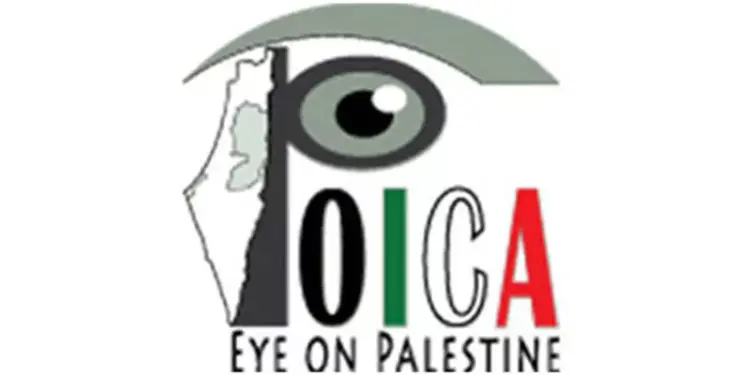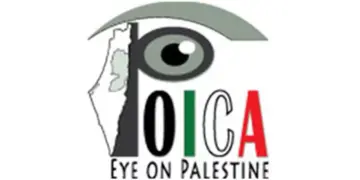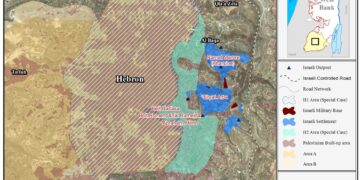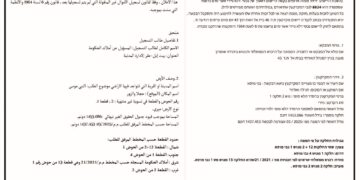Introduction
At the northwest of Nablus governorate, the town of Sebastia stands as one of the most prominent historical monuments in Palestine. Its roots date back more than three thousand years and include Roman, Byzantine, and Islamic monuments that still stand today, including a Roman theater, stone columns, ancient palaces, and the Great Mosque, known as the Mosque of Nabi Yahya. This rich heritage has made the town a candidate for inclusion on the UNESCO World Heritage List, but the Israeli occupation has prevented this through a series of systematic practices.
In recent years, Sebastia has become an open confrontation ground between its Palestinian residents and Israeli settlers supported by the Israeli Civil Administration. Human rights organizations and local and international media have documented repeated attacks, including mass incursions by Israeli settlers, fly the Israeli flags on archaeological sites, and the prevention of Palestinian cultural events organized to highlight the town’s national identity. The occupation authorities have also carried out archaeological excavations and “restoration work” under the pretext of tourism, but in essence, they are attempts to rewrite a historical narrative that alleges exclusive Jewish roots in the area.
The town’s residents point out that these violations are not merely individual acts, but rather part of an official policy aimed at integrating Sebastia into the so-called “Torahic Trail,” which connects multiple archaeological sites in the West Bank under occupation control. In doing so, Israel seeks to strip the site of its Palestinian roots and transform it into a settlement-based tourist destination that serves its political narrative.
Ironically, what is being perpetrated against the archaeological site in Sebastia intersects with the settlement expansion policies taking place in other areas of the West Bank, such as the establishment of a new settlement in the heart of Hebron (H1). In both cases, the occupation relies on multiple tools, from direct control of the land to targeted archaeological excavations to changing the demographic and social character. This dual policy demonstrates that Israeli targeting is not limited to the political and geographical present of Palestinians, but also extends to their historical memory and cultural narrative.
The Judaization Project of Sebastia: Beginnings with the New Israeli Government
Since the new Israeli government, headed by Benjamin Netanyahu, took office in December 2022, the town of Sebastia, northwest of Nablus, has witnessed a systematic settlement attack targeting its historical and archaeological identity. The site, one of the oldest Canaanite and Roman cities in Palestine, has become an open battleground between the authentic Palestinian narrative, which emphasizes the town’s antiquity and Arab identity, and Israel’s accelerating attempts to impose an alleged Torahic narrative. This attack began with intended steps to control the archaeological site, followed by the construction of settlement bypass roads, and culminated in extensive Judaization projects under the agenda of “developing tourism” and “preserving Jewish heritage,” while their essence is to alter the historical character and impose Israeli sovereignty over the community.
Settlement Roads and Infrastructure
One of the most prominent features of settlement expansion in Sebastia is the commencement of work on a bypass road that cuts through the town’s agricultural lands, effectively destroying parts of the archaeological site, which is rich with Roman columns and a historic theater. Although Israel justifies these projects as serving the Israeli settlers’ travel, their true goals lie in strengthening field control over Palestinian archaeological sites and gradually annexing them, consequently linking them administratively and geographically to surrounding settlements, such as Shavei Shomron.
Settlement “Development” Projects
The year 2023 witnessed a significant increase in government funding for Judaization projects in Sebastia. In May, the Israeli government approved an investment of 29 million shekels to develop the site, followed in July by the allocation of an additional 32 million shekels for projects mostly located in Area C. At the beginning of 2025, the “Samaria National Park” project was launched under the pretext of preserving “Jewish heritage,” with a new budget of more than 32 million shekels. However, observers confirm that the true goal of these projects is not to preserve heritage, but rather to impose full Israeli sovereignty over the site and reshape its identity in line with the Torahic narrative, in a clear effort to eradicate the Palestinian presence.
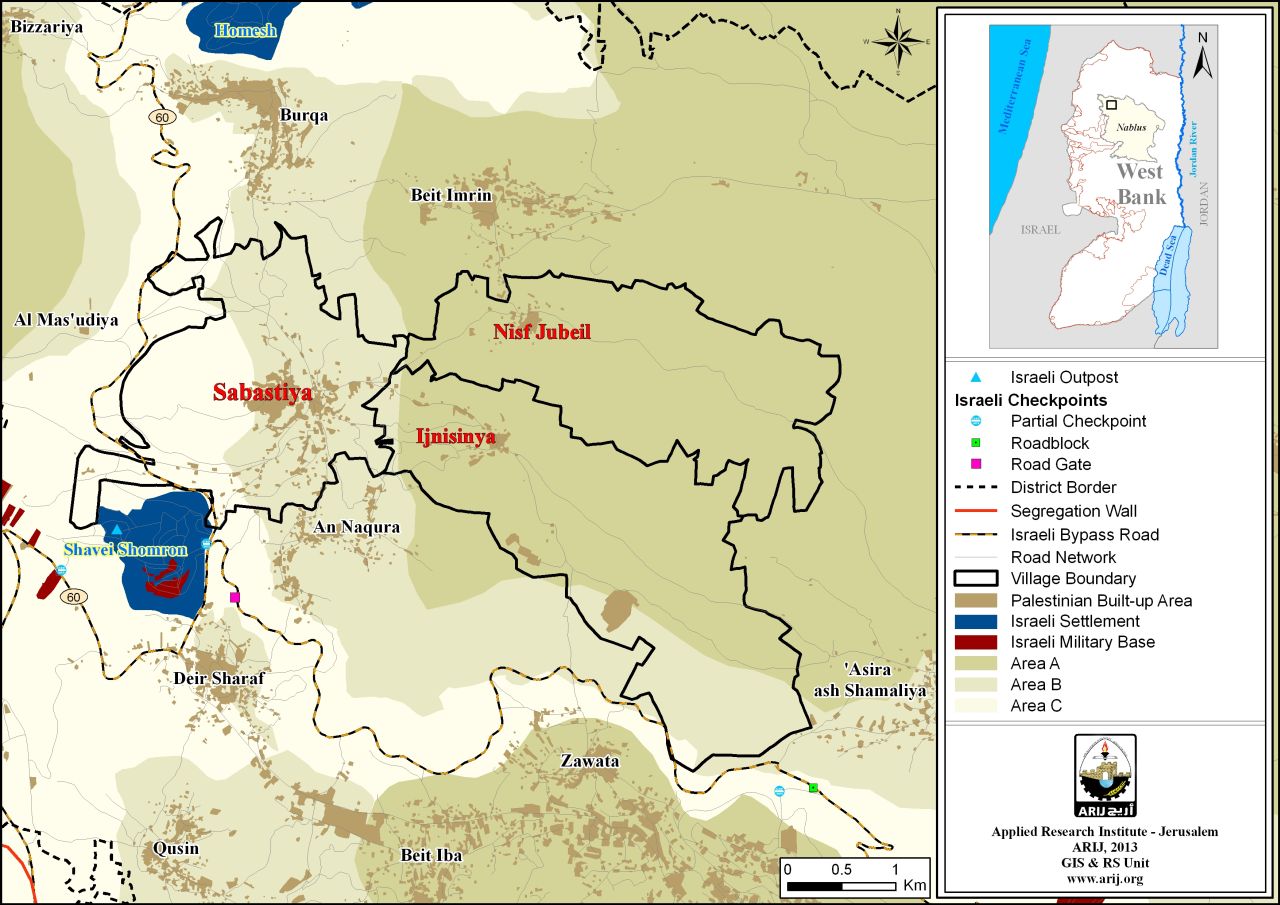 Map 1: Location Map of Sebastyia Village
Map 1: Location Map of Sebastyia Village
Military and Legal Control Policies
In addition to field projects, Israel has pushed for an amendment in its military and legal policies. In July 2024, members of the Knesset submitted a bill aimed at annexing antiquities in the West Bank to the Israel Antiquities Authority, stripping the Palestinian Ministry of Tourism and Antiquities of its authority and placing archaeological sites directly under Israeli administration. The occupation forces also seized approximately 1,300 square meters of land in Sebastia to establish a military barracks overlooking prominent archaeological sites such as the Temple of Augustus and the Palace of Omari. This move reveals that the project is not cultural or touristic, but rather primarily security and settlement-related.
Direct Repercussions on the Town and Its Residents
The repercussions of Israeli Judaization projects on Sebastia went beyond the borders of the archaeological site; they have also affected the daily lives of residents and the entire local economy. Since the beginning of 2023, the town has witnessed almost daily raids by Israeli settlers under the protection of occupation forces, accompanied by verbal and physical assaults and deliberate provocations within the archaeological area and around the town. This has led to a significant decline in the number of foreign and local visitors, directly affecting the primary sources of income for dozens of Palestinian families who rely on tourism as their primary source of livelihood.
Furthermore, Sebastia’s cultural heritage, which dates back more than five thousand years and includes Roman and Byzantine temples and royal palaces, is being systematically targeted. Israel seeks to erase the Palestinian and Arab identity of the site and replace it with a Torahic narrative. This targeting clearly violates international law, particularly The Hague Convention for the Protection of Cultural Property in the Event of Armed Conflict (1954) and the Fourth Geneva Convention (1949), which prohibit an occupying power from harming the cultural heritage of occupied peoples.
Sebastia: History and Civilization
- Through the Ages
Sebastia is one of the oldest Palestinian cities, with its earliest remains dating back to the Bronze Age around 3200 BC, making it a witness to more than five thousand years of continuous history. It has been ruled by multiple civilizations; the Assyrians and then the Persians ruled it, before becoming a prominent center during the Roman era, where King Herod renamed it “Sebasti,” meaning “the venerated,” in 30 BC.
During the Byzantine era, its religious significance increased due to its association with the tomb of the Prophet Yahya (John the Baptist), which made it a destination for Christian pilgrims from all over the world. With the Islamic conquest, particularly after the victory of Saladin in 1187 AD, the town returned to Islamic rule. A mosque was built on the shrine of the Prophet Yahya, which remains one of its most important religious landmarks to this day.
- Prominent Archaeological Landmarks
Sebastia boasts rare archaeological treasures that embody successive eras of human civilization. Among the most prominent of these landmarks are the Roman cemetery, the shrine of the Prophet Yahya and his mosque, the Cathedral of John the Baptist, the Kayed Palace, and the Basilica Square, which reflects the grandeur of Roman architecture. It also houses the Royal Palace, the Hellenistic Tower, the Temple of Augustus, the Roman Theater, and the Colonnaded Street, one of the widest archaeological streets in Palestine.
Despite the richness and diversity of antiquities at the current site, archaeological estimates indicate that approximately 90% of the town’s antiquities remain buried underground and require scientific and systematic excavation. This makes Sebastia one of the largest undiscovered archaeological treasures in the region, underscoring its importance not only as a Palestinian heritage site but also as a global human heritage that deserves protection and preservation.
Sebastia Today: The Battle of Memory
The conflict in Sebastia is no longer limited to daily raids by occupation soldiers and Israeli settlers or physical assaults on residents and visitors. Rather, the town is now experiencing a more dangerous battle related to narrative, memory, and the right to history. The occupation authorities are working to impose their historical narrative through systematic policies that include renaming, targeted restoration, and altering the features of archaeological landmarks. These policies aim to integrate Sebastia into the “Torahic Trail” and transform it into a settlement related symbol serving the Israeli project, rather than remaining a living witness to the depth of Palestinian history spanning thousands of years.
A Call to Save the Antiquities of Sebastia
Protecting Sebastia is not solely the responsibility of archaeological institutions but rather a collective and individual responsibility that requires sustained Palestinian and international efforts, which also involves:
- Intensifying documentation of violations and attacks and international calls to pressure for the protection of the site from coercive Judaization and settlement appropriation.
- Raising community awareness, especially among younger generations, of the importance of protecting history and national memory.
- Realizing that Sebastia is not an isolated case, but rather part of a broader settlement plan that includes sites like Battir and al-Walaja in Bethlehem, the Old City of Hebron, Jerusalem, and neighborhoods like Sheikh Jarrah and Silwan.
The battle for Sebastia is a battle over identity, narrative, and existence, and protecting it means defending the Palestinian memory rooted in land and history.
Prepared by:
The Applied Research Institute – Jerusalem


